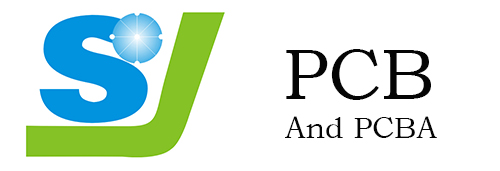1. Mechanical layer As the name suggests, the mechanical layer is used for mechanical molding, that is, the appearance of the entire PCB. In fact, when we talk about the mechanical layer, we are referring to the overall appearance structure of the PCB. It can also be used to set the board's outline dimensions, data marks, alignment marks, assembly instructions, and other mechanical information. This information changes according to the requirements of the design company or PCB manufacturer. In addition, mechanical layers can be connected to other layers for display output together.
2. Keep out layer (forbidden wiring layer), which is used to define the area where components and wiring can be effectively placed on the circuit board. Draw a closed area on this layer as the valid area for routing. Autoplace and route cannot be done outside this area. When we lay copper with electrical characteristics, the prohibition wiring layer defines the boundary, that is to say, after we first define the prohibition wiring layer, in the later laying process, it is impossible for us to lay wires with electrical characteristics in the prohibition outside the boundaries of the routing layer. It is common to use the forbidden layer as a mechanical layer, which is actually wrong, so it is recommended that you make a distinction, otherwise the panel factory will change the properties for you every time it is produced.
3. Signallayer (signal layer): The signal layer is mainly used to arrange the wires on the circuit board. Including Top layer (top layer), Bottom layer (bottom layer) and 30 MidLayer (middle layer). Devices are placed on the Top layer and Bottom layer, and wiring is carried out on the inner layer.
4. Top paste and Bottom paste are the top and bottom pad stencil layers, which are the same size as the pads. This is mainly because we can use these two layers to make stencils when we do SMT. Just dig a hole the size of a solder pad on the Internet, and then cover the steel mesh on the PCB, and use a brush with tin to brush the tin evenly, as shown in Figure 2-1.
5. Top Solder and Bottom Solder are solder resist layers, which prevent green oil coverage. We often say "opening windows". Conventional copper plating or wiring are covered with green oil by default. If we correspondingly in the solder resist layer If it is processed, it will prevent the green oil from covering and expose the copper. The difference between the two can be seen in the following figure:
6. Internal plane layer (internal power supply/ground layer): This type of layer is only used for multi-layer boards and is mainly used to arrange power lines and ground lines. We call them two-layer boards, four-layer boards, and six-layer boards, which usually refer to the number of signal layers and internal power/ground layers.
pcb design
7. Silkscreen layer (silk screen layer): The silk screen layer is mainly used to place printed information, such as the outline and label of components, various annotation characters, etc. Altium provides two silkscreen layers, Top Overlay and Bottom Overlay, which place the top silkscreen file and the bottom silkscreen file respectively.
8. Multilayer (multilayer): The pads and penetrating vias on the circuit board must penetrate the entire circuit board to establish electrical connections with different conductive graphic layers. Therefore, the system specially sets up an abstract layer—multilayer. Generally, the pads and vias are set on multiple layers. If this layer is closed, the pads and vias cannot be displayed.
9. Drill Drawing (drilling layer): The drilling layer provides drilling information in the circuit board manufacturing process (such as pads, via holes need to be drilled). Altium provides Drillgride (drilling instructions map) and Drill drawing (drilling map) two drilling layers.
The above is the understanding of each layer in PCB design, I hope it can provide you with some references!



